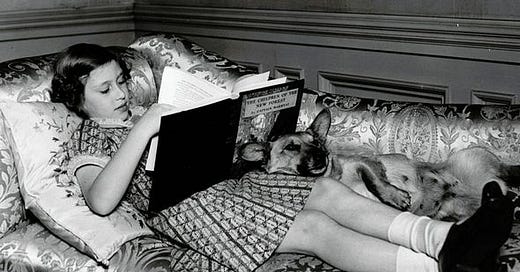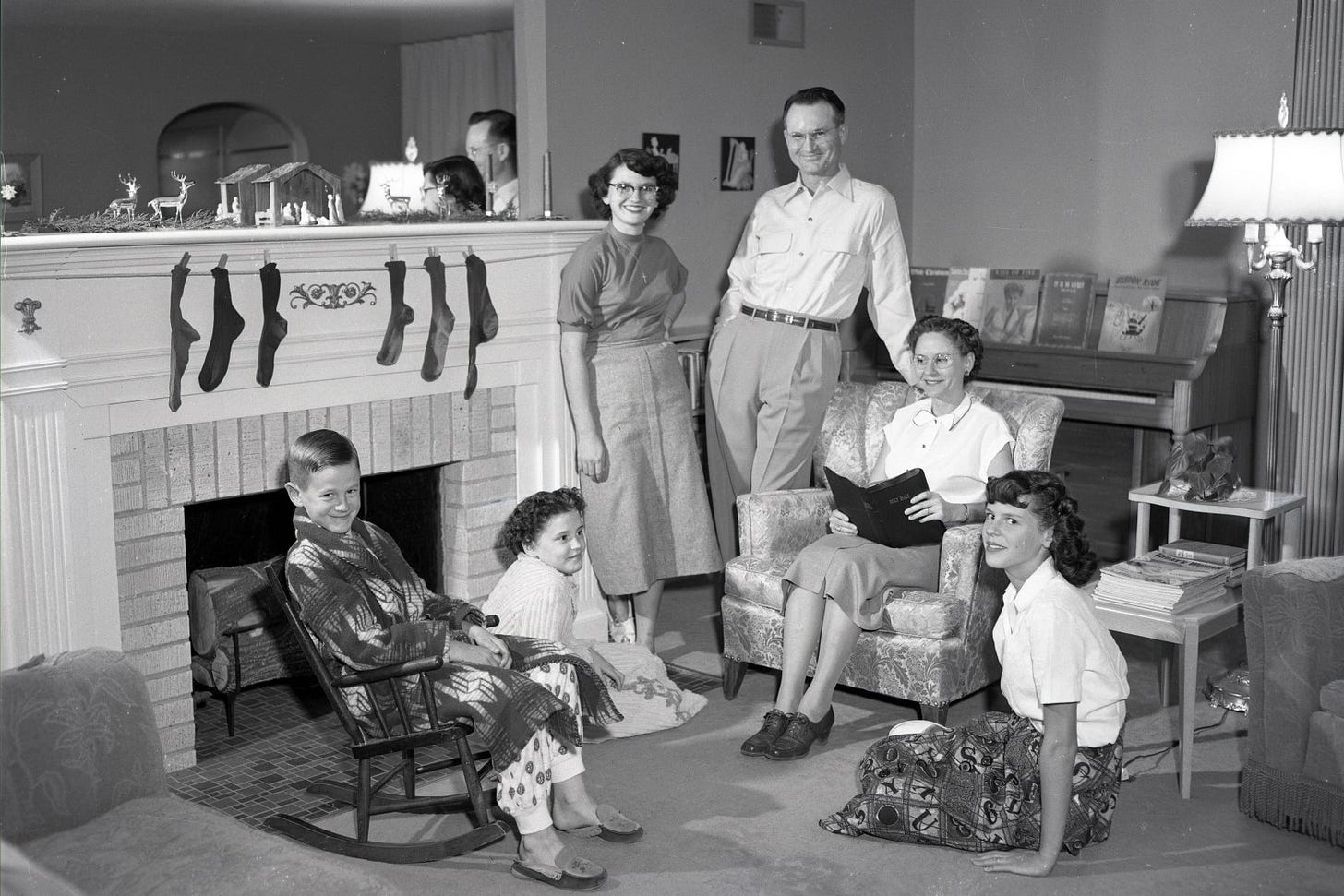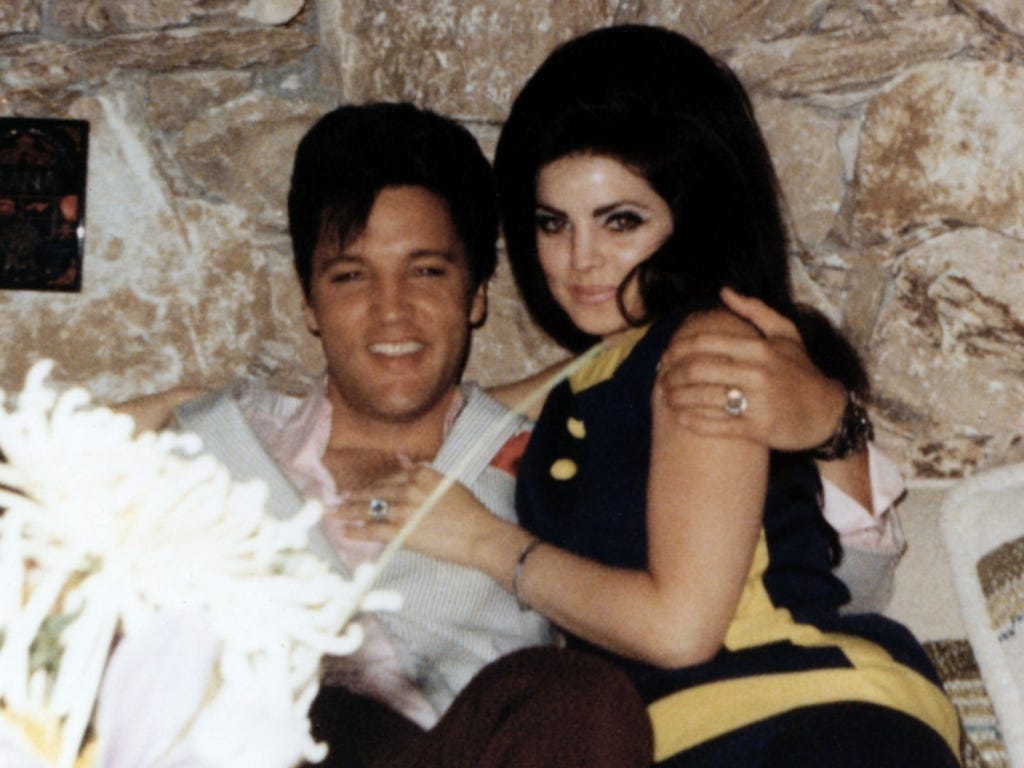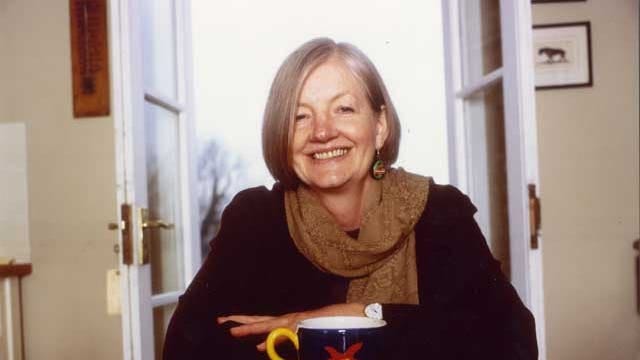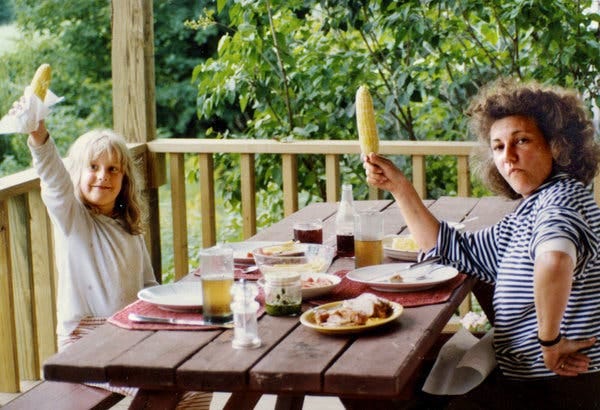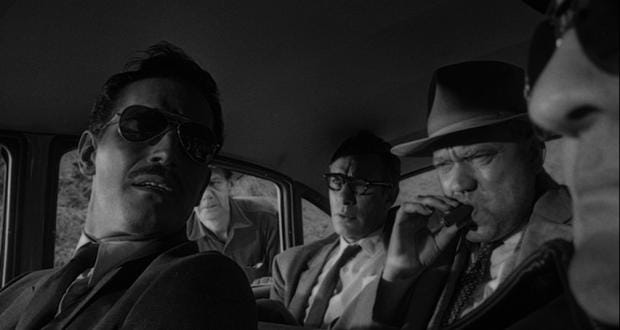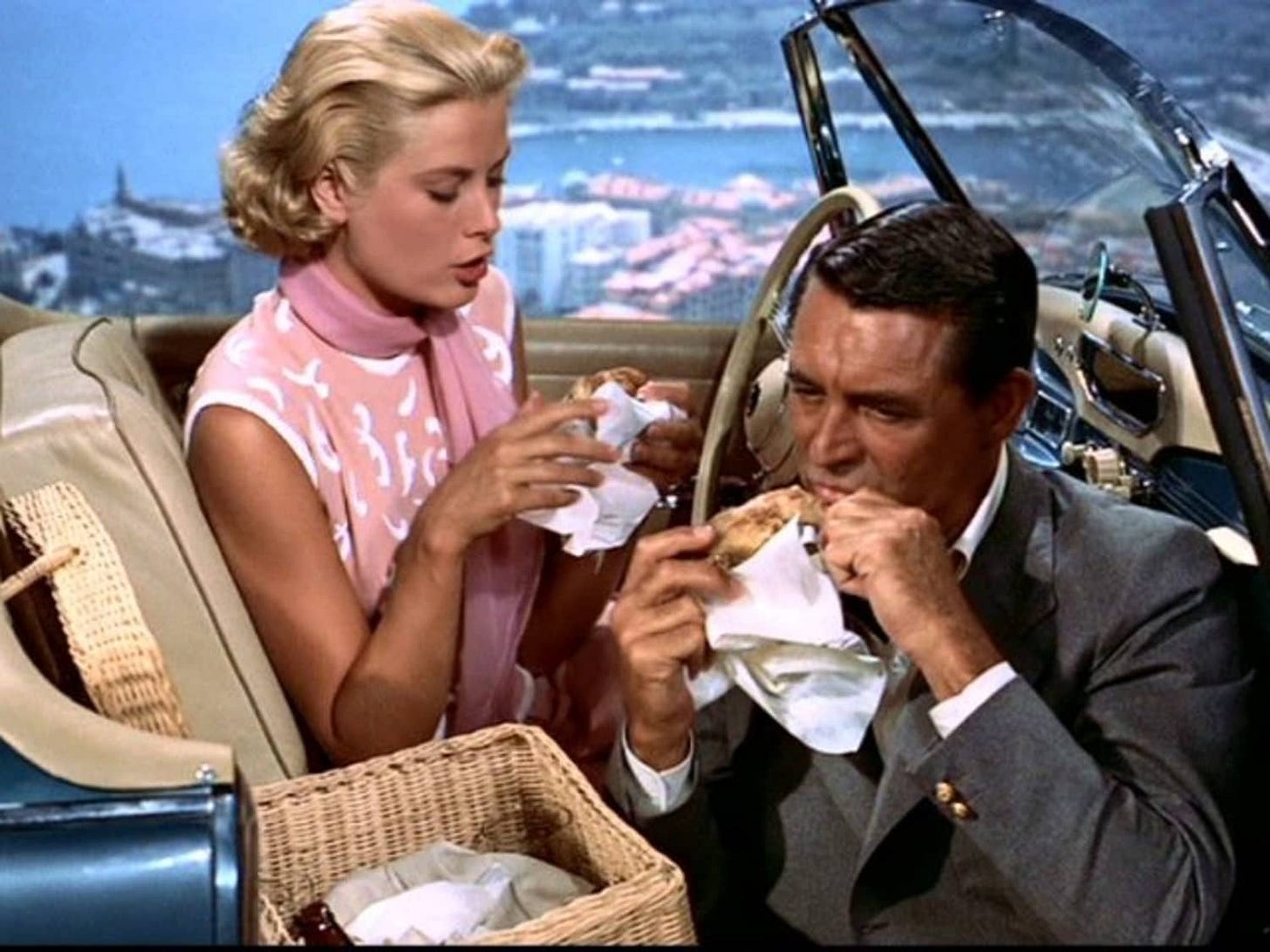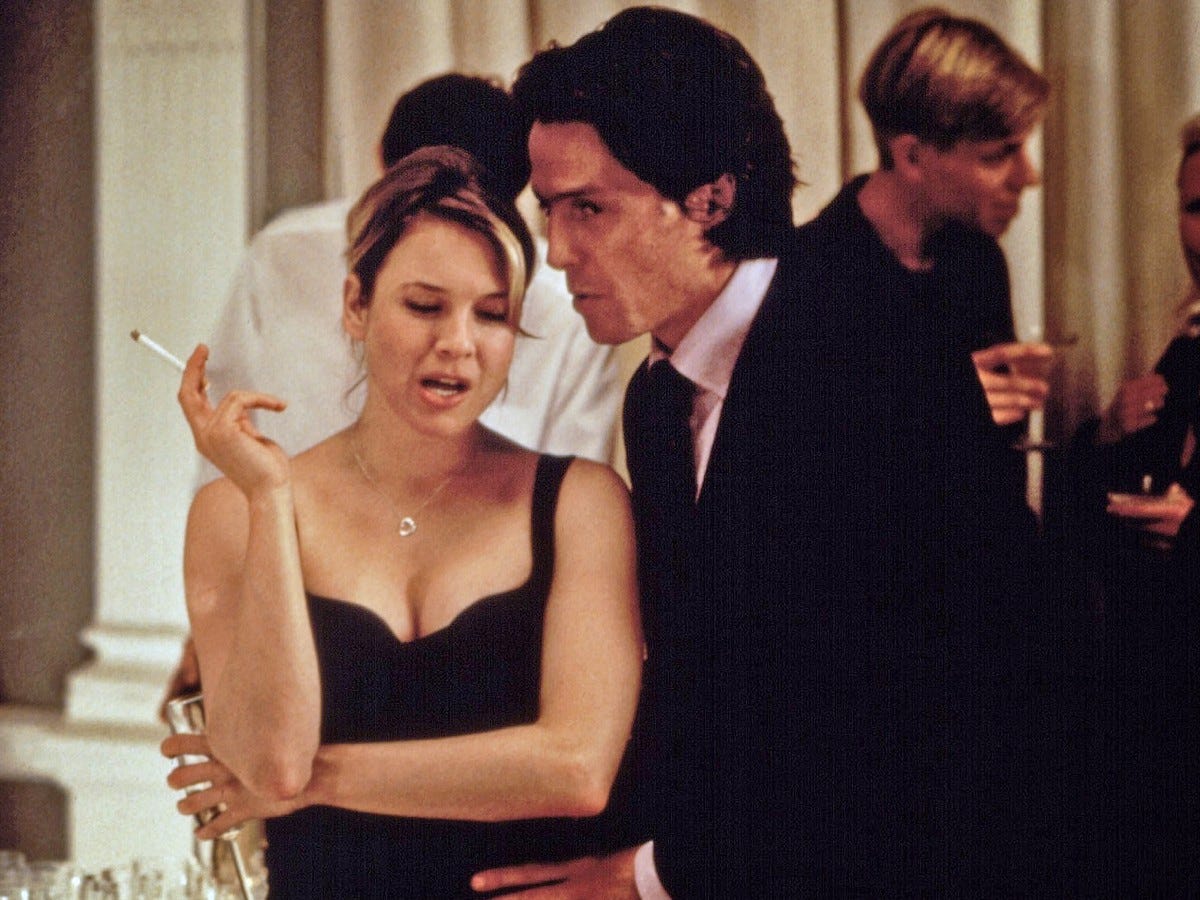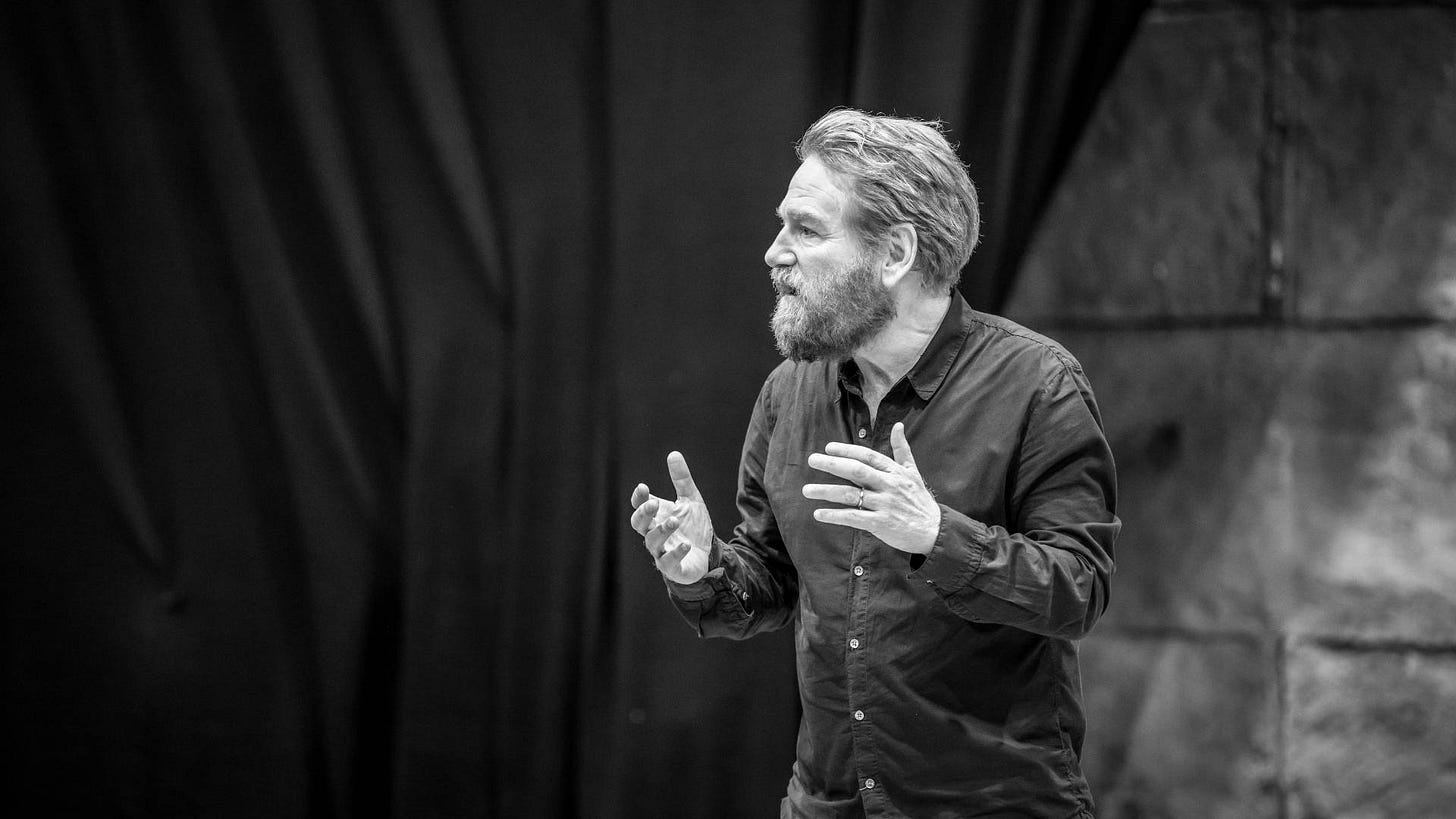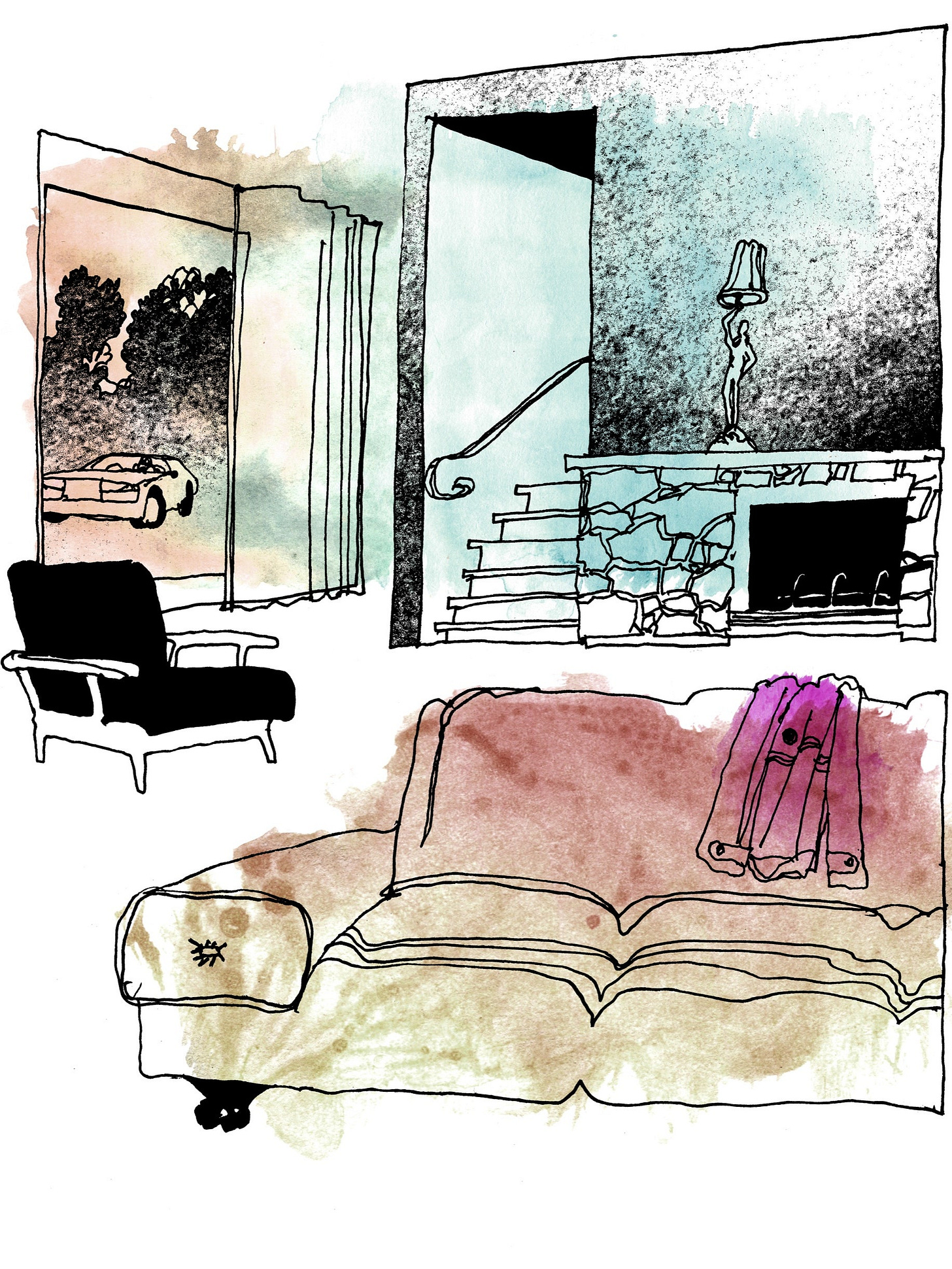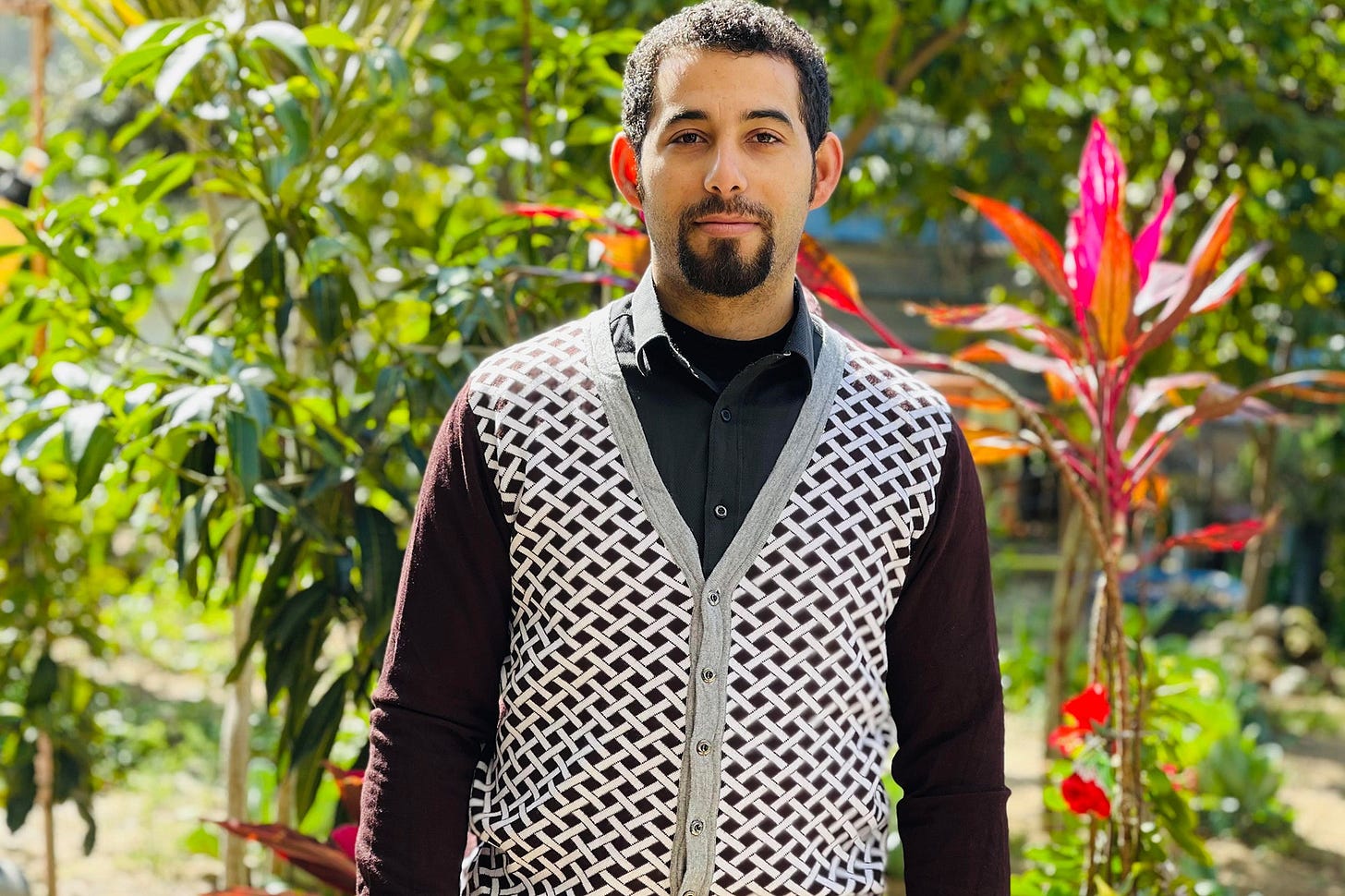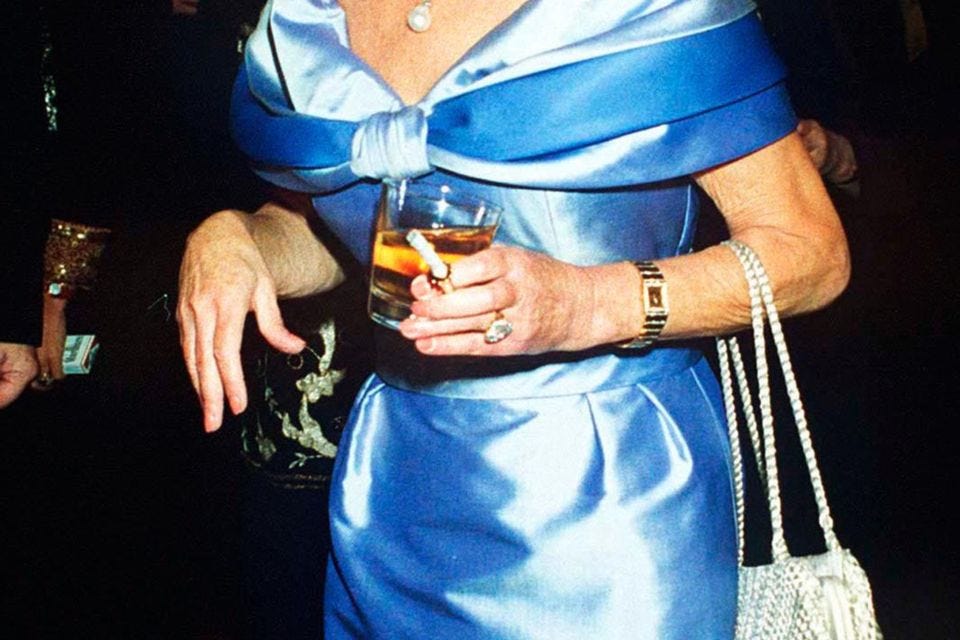So, important disclaimer: I’m headed to London next week, which has shaped the ~energy~ of this month’s newsletter.
Without further ado:
November Book Selections
The assignment is England, true crime, and Priscilla Presley, with a little Thanksgiving chaser at the end. LFG!!
Ninety-Nine Glimpses of Princess Margaret by Craig Brown (2017) — Get in the mood for The Crown’s sixth and final season with this fun, gossipy Princess Margaret biography. As the title suggests, it consists of 99 vignettes — from palace announcements to auction catalogues to diary entries — that trace Margaret’s life across a non-linear narrative, reading like a top-tier grocery store aisle issue of People.
In her 2018 review for The New York Times, literary critic Parul Sehgal wrote: “Brown ignores all the starchy obligations of biography and adopts a form of his own to trap the past and ensnare the reader — even this reader, so determinedly indifferent to the royals. I ripped through the book with the avidity of Margaret attacking her morning vodka and orange juice.” Absolutely.
Penance by Eliza Clark (2023) — One of my favorite reads of the year! I talked about this new novel in yesterday’s October Book Review, but, as a refresher, it takes the form of a faux true crime tell-all centered on the Brexit-era murder of a teenage girl in a sleepy, coastal British town at the hands of her three classmates. A Tumblr-inspired homage to Truman Capote’s In Cold Blood, Penance challenges traditional notions of novelistic structure. Forging an inventive stylistic path, Clark blurs the line between factual and emotional truth — and, in doing so, calls into question the distinction between those notions.
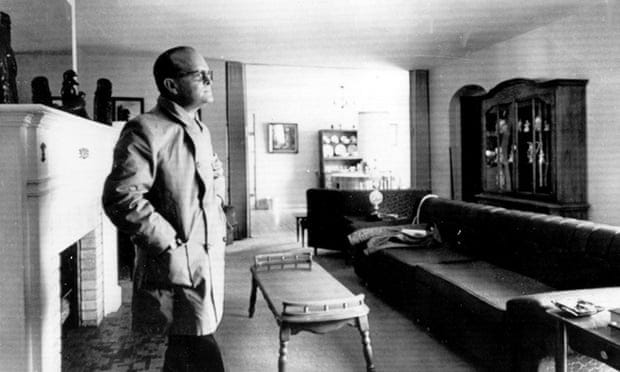
In Cold Blood by Truman Capote (1966) — While we’re on the subject, I highly recommend reading Truman Capote’s seminal non-fiction crime novel if you haven’t already. The murders that inspired the book occurred in November, and this read pairs well with Penance.
In 1959, Herb and Bonnie Clutter lived with their teenage children, Nancy and Kenyon, in the small town of Holcomb, Kansas, their two oldest daughters already out of the house (full family pictured above). Loved and respected in the community, Herb ran a farm and employed nearly 20 people at any given time, garnering a reputation for his kindness and fairness. The morning of November 15th, two ex-cons broke into the Clutter home in search of a fabled safe and shot all four members of the family in the process.
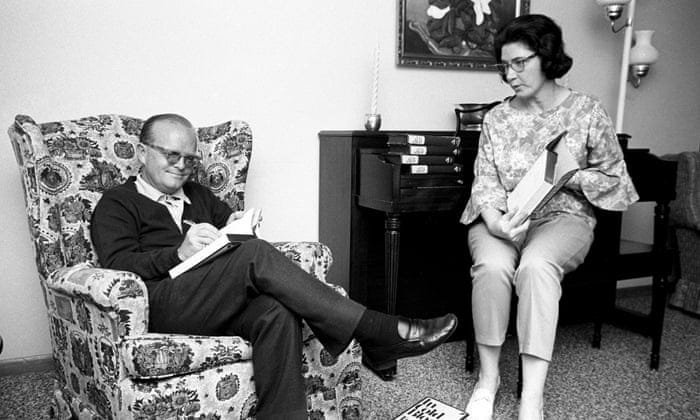
With the killers still at large, Capote read about the crime in The New York Times and grew fascinated. He brought his childhood bestie Harper Lee (of To Kill A Mockingbird — ICYMI: Lee’s Dill is based on Capote) to Holcomb to help gain the trust of locals, compiling nearly 8,000 pages worth of research and interviews. He spoke with the murderers extensively as well following their identification and capture.
In Cold Blood ran as a four-part series in The New Yorker starting September 25, 1965. It became an immediate sensation, leading to publication in full through Random House the following January. Capote’s novelistic prose fuses fact with fiction. He integrates imagined conceptions of how certain moments might have played out based on verified details, generating a visceral immediacy that Eliza Clark expertly parodies in Penance.
Elvis and Me by Priscilla Beaulieu Presley (1985) — Required reading before going to see Sofia Coppola’s Priscilla. In yesterday’s October Book Review, I jokingly-but-not-really called this celebrity memoir Don’t Worry Darling (Priscilla’s Version). The basis for Sofia Coppola’s new film, this 1985 autobiography details Priscilla Presley’s life with the king of rock and roll, from meeting him as a doting 14-year-old (yes, **14-year-old**) military brat in Germany during the fall of 1959 to exiting the Santa Monica courthouse hand-in-hand with him post-divorce in 1973 (pictured below).
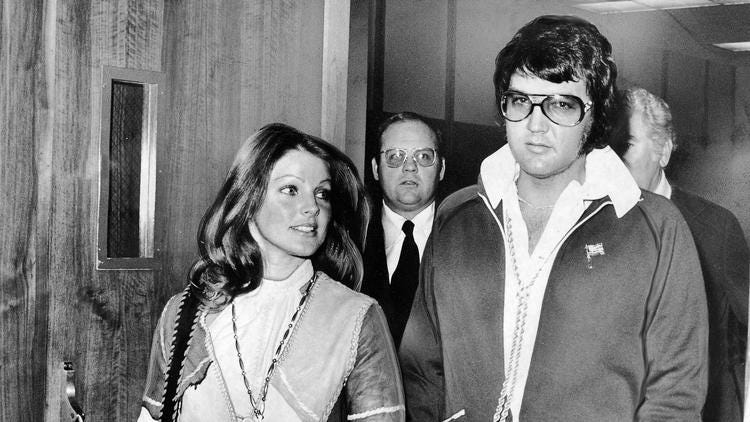
From my perspective, Elvis and Me reads more like domestic horror than a love story. Elvis comes across as deeply manipulative and controlling even in moments when Priscilla looks to portray him lovingly, which, to me, affirms the accuracy of her depiction. For instance, at one point, she recalls, “As I tried on dress after dress, Elvis delivered a running commentary on color. He liked me in red, blue, turquoise, emerald green, and black and white — the same colors he himself wore. He liked solids only, declaring that large prints took away from my looks. ‘Too distracting,’ he said. He hated browns and dark green, colors inextricably associated in his mind with the Army.” The book unveils the fragile psyche and gun-toting, all-gas-no-breaks lifestyle of one of the twentieth century’s most famous stars through the lens of his wife’s growth from submissive girl to self-assured woman. Over the course of nearly 15 years, Priscilla shifts from centering her entire existence around Elvis to shedding the “false eyelashes and heavy makeup, the jewels and flashy clothes,” outgrowing his preferences in favor of finding her own.
Without spoiling specifics, as Priscilla puts it toward the memoir’s end: “All devices that I’d depended upon for security I now shed…Finally, he asked, ‘Have I lost you to another man?’ ‘It’s not that you’ve lost me to another man, you’ve lost be to a life of my own.’”
Brother of the More Famous Jack by Barbara Trapido (1982) — British journalist Rachel Cooke’s back-cover blurb for the 40th anniversary reissue correctly calls reading Brother of the More Famous Jack “as comforting as eating toast and Marmite between clean, fresh sheets.” This cozy, lesser known coming-of-age novel centers on eighteen-year-old Katherine as her philosophy professor, Jacob Goldman, welcomes her into the fold of his eccentric family. When romantic tensions with his two sons start to bubble, Katherine finds herself embarking on an unforeseen odyssey from England to Italy and back again.
Trapido brings rom-com vibes without compromising quality prose, with Where’d You Go, Bernadette? author Maria Semple describing Brother of the More Famous Jack as “Brideshead Revisited meets Sabrina in bohemian 80s London” in her foreword. While elements of the novel certainly show its age, the feminist narratives espoused by Jacob’s wife, Jane, pull parts of the story ahead of its time.
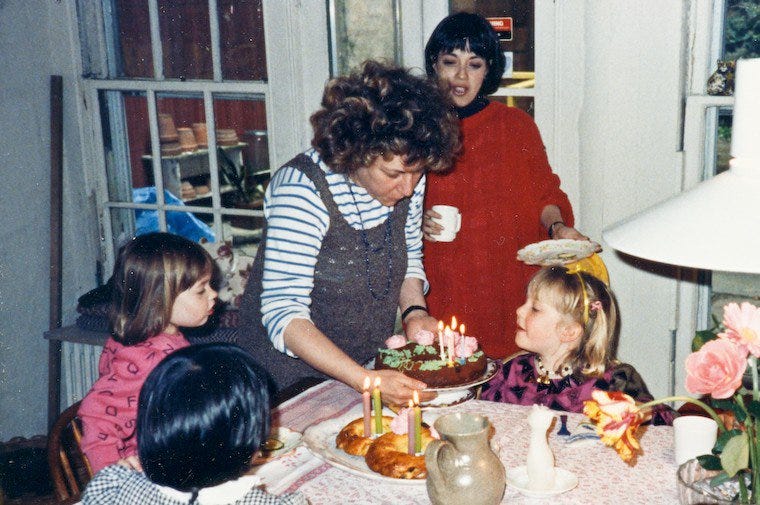
More Home Cooking by Laurie Colwin (1993) — As you may recall, I recommended Home Cooking (1988) in the October newsletter. If you want a part two ahead of Thanksgiving, I recommend picking up a copy of More Home Cooking. This posthumously-published collection, like its predecessor, includes Laurie Colwin’s best Gourmet magazine pieces, recipes interwoven with personal essays.
On the theme of food and family, Colwin’s daughter, Rosa, appears prominently in her stories. In 2014, food writer Jeff Gordinier developed a piece on Colwin for The New York Times, noting that her daughter “was only 8 when her mother died, overnight, of a heart attack. For fans of Ms. Colwin’s essays, she is a pivotal figure: the girl who made ‘spider webs with the fancy chicken-trussing strings, which I do remember doing,’ she said. She was there to witness the process of her mother’s experiment with the legendary ‘black cake,’ a Caribbean dessert whose ingredients steep in their own fruit-dense flavors for months.”
Toward the end of the piece, Gordinier notes that Rosa — who now identifies as nonbinary and goes by RF (and has written for Allure about how their mother’s parenting style empowered them to embrace their gender identity) — “can’t always relate to the predominantly heterosexual, comfortably upper-middle-class demimonde captured in her mother’s fiction, but picks up her mother’s voice, her phrasing, her opinions, her way of looking at the world, on every page of Home Cooking and More Home Cooking.” RF has “gone back to those books countless times. The novels…‘may be wonderful, but they’re not what I’m looking for. I just want more of her.’”
Upcoming Content to Consume
New Beverly Cinema: Touch of Evil (1958) and The Lady from Shanghai (1947) Double Feature (Dates: 11.3-11.4) — A two-night-only Orson Welles double feature for my West Coast subscribers! I haven’t seen The Lady from Shanghai (1947), but had the pleasure of watching Touch of Evil (1958) at The Paris Theater earlier this year coupled with a talk by Frank Oz — yes, of Muppets Take Manhattan (1984), Dirty Rotten Scoundrels (1988), and Little Shop of Horrors (1986). Despite giving off the complete opposite vibe, Oz spoke extensively about Welles’s influence on his own style. He praised the Citizen Kane director’s ability to build suspense through framing and pacing, qualities that kept me hooked throughout Touch of Evil. Also, Charlton Heston (pictured above in aviators) is insanely hot in it.
Film Forum’s Hitchcock’s ‘50s (Opening Date: 11.10) — On the heels of its mammoth 50 from the ‘50s festival, which I wrote about in the October newsletter and continues into the first part of this month, Film Forum will launch a one-week-only series focused exclusively on Alfred Hitchcock’s films of the 1950s. Programming will include Vertigo (1958), Dial M for Murder (1954), The Man Who Knew Too Much (1956), North by Northwest (1959), To Catch a Thief (1955), Rear Window (1954), Strangers on a Train (1951), The Wrong Man (1956), and I Confess (1953). I have yet to see The Man Who Knew Too Much (1956), The Wrong Man (1956), and I Confess (1953), but, of those films I have watched, my personal favorites of the programming include Dial M for Murder (1954), Rear Window (1954), and Strangers on a Train (1951).
Bridget Jones’s Diary at Village East (Date: 11.29) — This movie has everything. Hugh Grant. Colin Firth. Vodka. Chaka Khan. If you know, you know that Bridget Jones’s Diary (2001) is one of my favorite movies of all time. Like Goodfellas (1990), which I talked about last month, I’ve seen this film an inordinate amount of times, to the extent that I could probably recite the bulk of the script verbatim.
Loosely based on Jane Austen’s Pride and Prejudice, this clever comedy follows thirty-something, self-professed singleton Bridget Jones (played by Renée Zellweger) as she embarks on her ill-fated New Year’s resolution to “find nice sensible boyfriend and stop forming romantic attachments to any of the following: alcoholics, workaholics, sexaholics, commitment-phobics, peeping toms, megalomaniacs, emotional fuckwits, or perverts.”
Kenneth Branagh in William Shakespeare’s King Lear (Timing: Ongoing in November) — As you may know, Kenneth Branagh has starred in scores of Shakespeare adaptations, from Henry V (1989) to Much Ado About Nothing (1993) to As You Like It (2006). Now, the iconic British actor will perform the role of Lear live at the West End for 50 performances only before his self-directed production transfers to New York next year.
Despite valid local grievances about the rising price of London theatre tickets, I was able to snag a decent seat for $90. For my New York subscribers, the show will come to The Shed in fall of 2024.
Miscellaneous Musings
Air Mail’s “Eyes of a Killer” Series on the Idaho Murders — November 13th will mark the one-year anniversary of the brutal murder of four University of Idaho students — Madison Mogen, Kaylee Goncalves, Xana Kernodle, and Ethan Chapin — at the hands of criminology grad student Bryan Kohberger. Air Mail debuted an In Cold Blood-style series last winter that recounts the crime, integrating interviews with different affected parties.
You can check out Part One here and then continue through to the rest, with perpetual updates forthcoming.
“Upstate” by Emma Cline — I am once again telling you to read something by Emma Cline. This short story from the author of The Guest and The Girls, which ran in this week’s edition of The New Yorker, captures the quintessence of just how fucking weird the concept of Airbnb is when you really stop and think about it.
The story centers on a woman, Kate, heading upstate for the weekend with her older boyfriend, Paul. Cline, as always, captures tenuous dynamics flawlessly, distilling the tension between the expected bliss of downtime and the reality of restlessness. In an interview about this piece in The New Yorker, Cline explained: “A vacation or a trip can often act as a pressurizer on a relationship, exaggerating existing issues or dynamics. I wanted Paul and Kate’s trip to feel slightly artificial—a ‘weekend away,’ where they never actually get ‘away.’ For these characters, there is an element of performance—a self-consciousness about ‘vacationing,’ the pressure to have a good time. They are constantly taking the temperature of what they are doing: Are we having fun? Are we eating the ‘good’ things? Are we having peak experiences? And then there are so many opportunities to feel that they are doing it wrong.”
Cline’s attention to particularities helps craft a holistic image of both characters. For instance, her integration of the word “like” throughout Kate’s dialogue, Paul’s post-divorce haircut, and the couples’ differing notions of what to photograph coalesce to connote their age gap before it gets explicitly stated. Small details — from a ten-minute dinner pilgrimage along the highway to near-ubiquitous Monday closures — reflect the texture of a quintessential city-to-country escape.
Physical environments shape the story, revealing information about the characters on macro and micro scales. For instance, in one scene, Paul and Kate identify his car from its interior contents, while, upon arrival to the Airbnb, Kate extrapolates information about the owner, Djuna, from the bookshelves. As the story nears its conclusion, Djuna emerges as an unsettling force, prompting reflection on why we as a culture have normalized curling into strangers’ empty beds, the sheets “smelling like other people’s bodies.”
“The View from My Window in Gaza” by Mosab Abu Toha — This stunning piece from Palestinian poet and short story writer Mosab Abu Toha (pictured above) ran as The New Yorker’s Weekend Essay on October 20th. It chronicles a bike ride Toha took back to his house after the onset of Israel’s attacks on Gaza to get bread for his family.
Vivid descriptions of his home accentuate the piece. For instance, Toha recalls: “In 2021, when I returned from a fellowship in the United States, my parents generously refreshed my apartment, buying new plates, glasses, rugs, and a desk. They had shelves installed for all the books I brought back. They also had the ceiling painted with a pattern that I love. In the center is a big brown-and-yellow star, and around it are little triangles, circles, and a rainbow. The shapes and colors seem to embrace and coexist with one another, like strangers who share the same floor of a building. The moment I saw it, I knew how much love my parents had for me.” The ceiling’s shapes emerge as an anchoring force amidst the chaos, a remnant of normalcy, a reminder of quieter times. Toha writes, “The ceiling appears to be staring at me. I shut my eyes. When I open them, the big star, the circles and triangles, and the rainbow have not moved. The way they cling to the ceiling reminds me of a baby on its mother’s breast. For a moment, I wish that I were a baby.”
As of my writing this newsletter, Toha is still alive. An Israeli airstrike, however, turned his home to rubble on October 28th. He shared an image on Instagram, writing: “(We are still breathing.) This used to be our four-floor house. I lived on the third floor. It’s all gone. I just woke up to the news yesterday morning. We had no internet at all yesterday to post because of the bombing. I just don’t see my books, the ones I brought with me each time I returned from the US. I do not see my writing desk, not my children’s beds. Not my and my wife’s beautiful clothes and shoes. We are houseless now, but not homeless. We are barely alive!!”
Supplemental Reading
As always, don’t forget to use archive.ph if you can’t access these pieces or any of the ones throughout my Substack!
Salon: “Najla Said: ‘My Arab-American story is not typical in any way’”
The New York Times: “Sofia Coppola Makes It Look Easy. It Isn’t.”
British Vogue: “24 Throwback Photos Of Priscilla Presley, A Legend in Her Own Right”
Air Mail: “60s Girl Groups Oral History: But Will You Love Me Tomorrow?”
Town & Country: “The Guy Behind New York Metro Weather Knows You Need Real Talk”
Cocktail of the Month
I love a Pimm’s Cup in summer, which sent me looking for a more autumnal iteration to bring you all for November. Typically a gin-based cocktail, this version calls for Rye Whiskey, resulting in a heavier flavor.
You can probably hunt down pre-made ginger simple syrup. For instance, Boisson definitely carries it. If you can’t find it though or feel so inclined to make it yourself, mix half a cup of water, half a cup of granulated sugar, and one piece of fresh ginger (two inches in length, sliced) in a pot and heat until combined. Then, cool and store in your refrigerator.
To make the drink itself, add one and a half ounces of Pimm’s No. 1, one ounce of Rye Whiskey, and half an ounce of the ginger simple syrup into an iced highball glass. Stir to combine, then top with three ounces of apple cider. Garnish with apple slices and rosemary.
Stay tuned for October movie reviews tomorrow!
xo,
Najet

